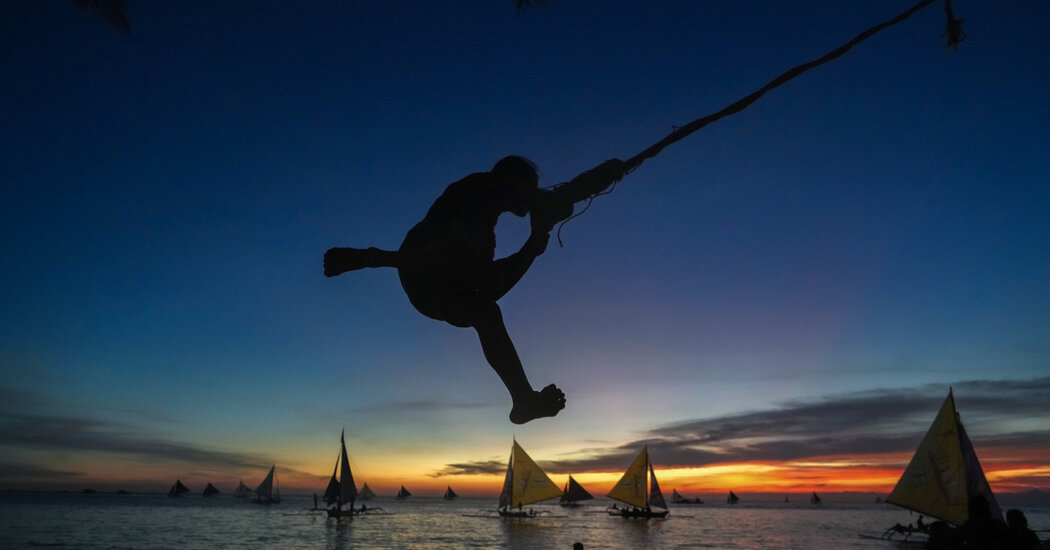When the Philippine island of Boracay was in the rogues’ gallery of destinations marred by overtourism, large sections of its 2.5-mile main White Beach were jammed with thousands of visitors and long trains of beach beds and umbrellas. Fleets of boats motored up to the sand’s edge, and multitudes of peddlers sold trips and trinkets and gave massages, braided hair and applied henna tattoos right on the beach.
At night, a cacophony of music spilled from a phalanx of makeshift dining rooms in the sand, couches and cabanas unfurled toward the water, and fire spinners filled the air with flames and fumes.
Oil from the boats, litter from the beach and sewage illegally piped into the sea polluted the waters.
Early in 2018, however, then-President Rodrigo Duterte — known for his radical approaches — declared Boracay a “cesspool” and abruptly shut it down from April to October.
The government demolished or chopped off sections of several hundred hotels, restaurants and other businesses that had been built too close to the water and in forests and wetlands. It uprooted dozens of illegal sewer pipes along the beaches and upgraded the sewer system. It widened the notoriously clogged narrow roads and put in sidewalks. It devised a new promotion of Boracay as a sustainable ecotourism island rather than a 24/7 party hot spot.
And in one of the rarest and most extreme responses to unbridled tourism growth, the national task force created to oversee the island imposed a limit on the number of visitors, setting the carrying capacity at 6,400 arrivals per day, or 19,215 tourists at any given time.
These days, the captivating White Beach is an open expanse of pristine sand, motorboats are confined to two floating docks and the aquamarine water has been cleaned up. Signs up and down the beach declare: NO STRUCTURES AND FURNITURE, NO DRINKING OF ALCOHOL, NO FIRE DANCING.
On a mid-February night, Tyler O’Dowd was part of a steady stream of tourists strolling on the sandy path up from the beach, pointing out to his fiancée where the action used to be. The couple, on a four-day trip to celebrate Mr. O’Dowd’s 38th birthday, said they wouldn’t mind dining in the sand or a nightlife spot or two on the beach. Still, they said, they preferred the new vibe.
“I was younger back then so I liked the party lifestyle,” said Mr. O’Dowd, an American teacher living in Manila, referring to his first visit, in 2013. “Now I’m older so I do enjoy this…
Click Here to Read the Full Original Article at NYT > Travel…
